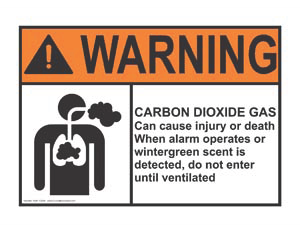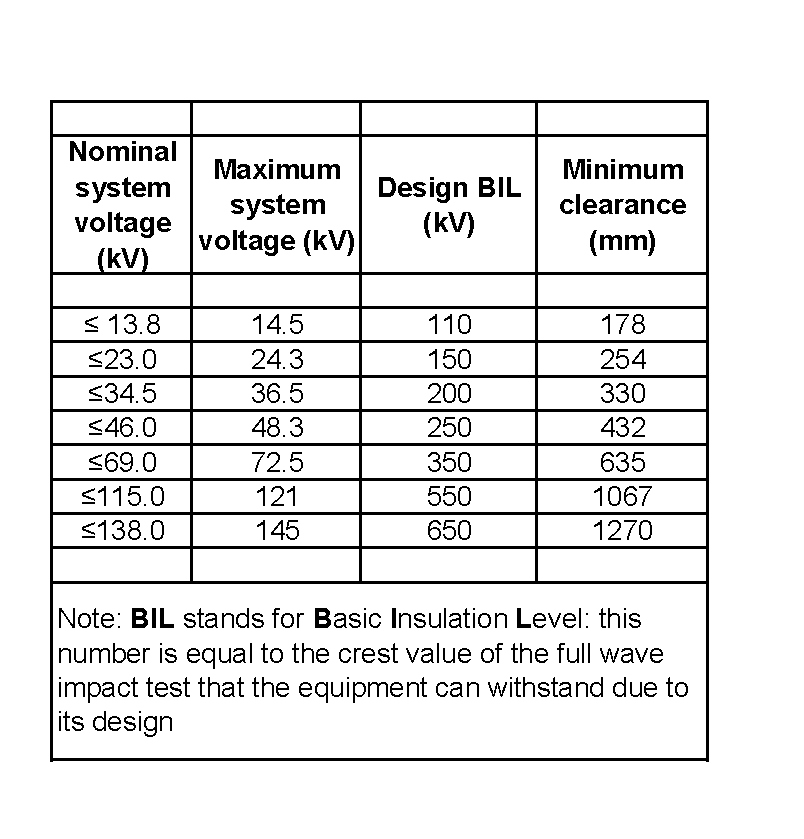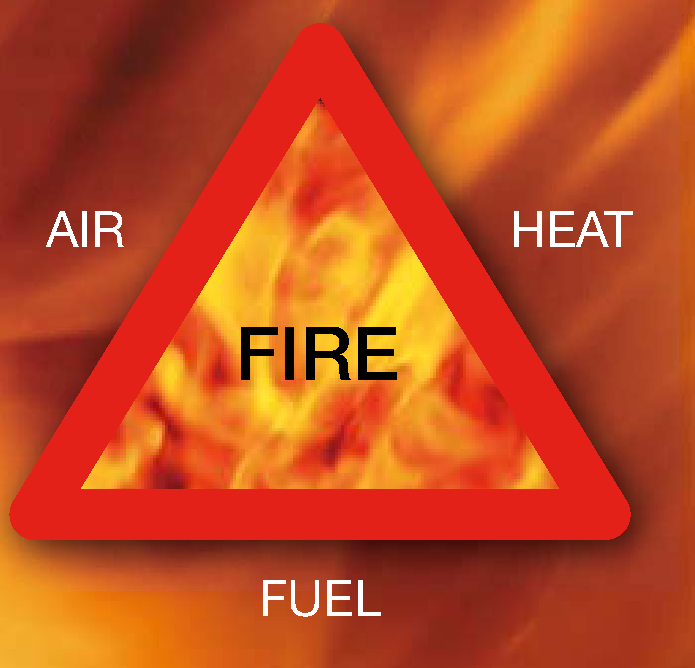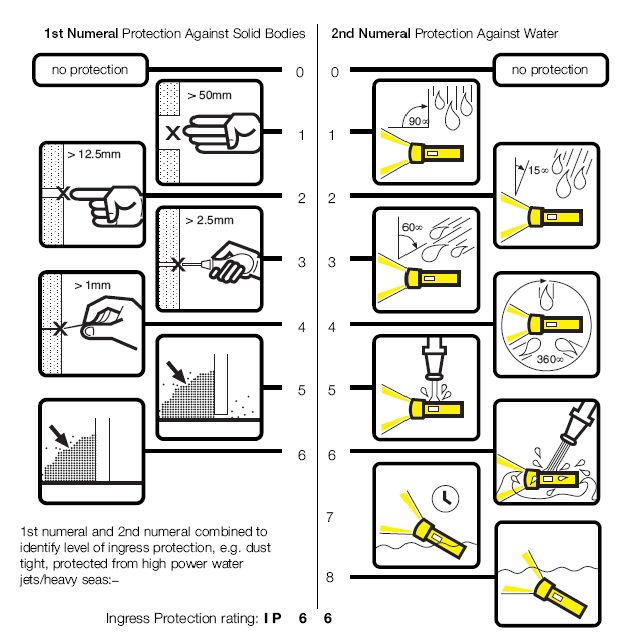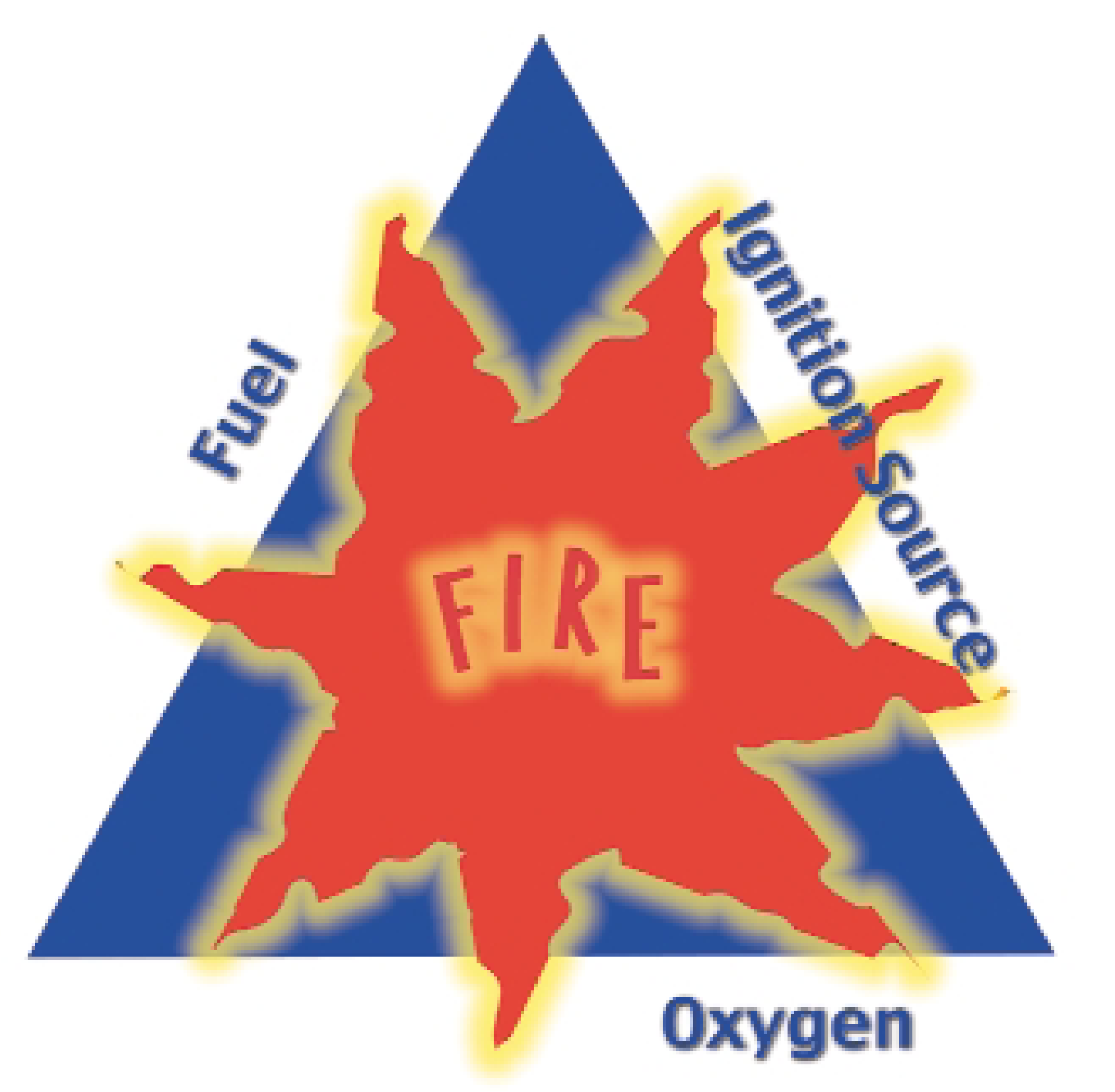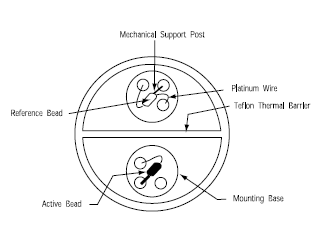Carbon dioxide (CO2) is widely used in fire figting equipments to inert the atmosphere surrounding a fire.
Carbon dioxide a colorless, odorless, electrically nonconductive gas which is a suitable medium for putting out fires. It is approximately 1.5 times heavier than air and forms dry ice when discharged into the atmosphere. It extinguishes fire mainly by reducing the concentration of oxygen, as can be seen from the fire triangle.
Being heavier than air combined with its ability to displace oxygen makes it a really dangerous fire extinguishing medium to be used by humans. Consequently, carbon-dioxide fire extinguishing systems must not be installed in normally occupied areas. In such places, human-friendly clean agents like FM-200 must be used. However, in extreme cases and only if no other equivalent extinguishing medium can be used, use of carbon dioxide may be allowed only if all safety measures and safeguards are taken, both in design, installation, operation and maintenance of the system, for example use of lock-out valves, provision of time delay and pre-alarm etc, training etc.
Where to use carbon dioxide for fire extinguishing purposes
Taking into consideration the above-mentioned limitations, carbon dioxide can be used in the following spaces:
- Electrical equipment spaces, like LV and MV switchgears, battery rooms, diesel generators areas, cable rooms, isolated and unmanned datacenters: use of water in these areas is highly undesirable for obvious reasons.
- Areas of storage, transport or hanlding of fuels. It has to be considered that whenever such spaces are in close vicinity to fire fighting water supply network, the preferred method for their fire-protection is through the use of a suitable water-foam mixture.
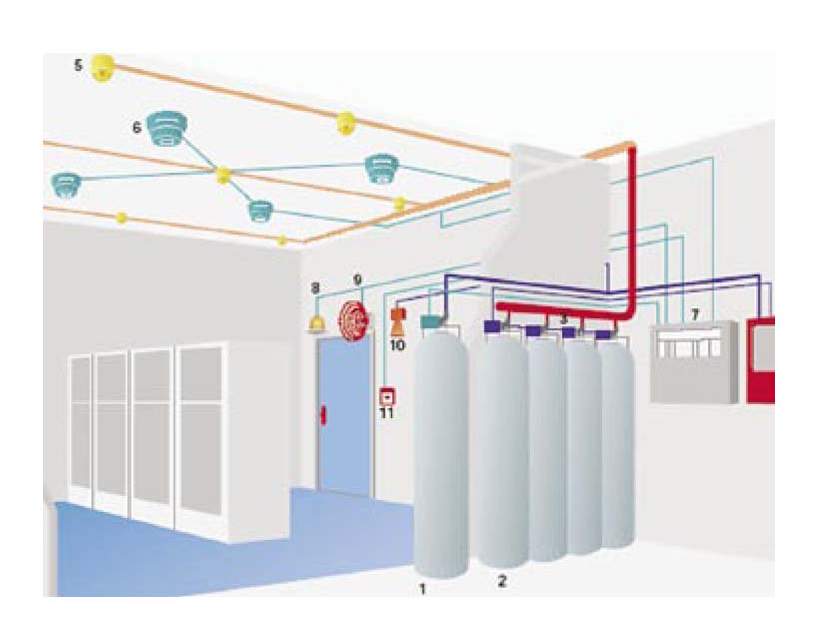
Picture 1 - Typical high-pressure (bottles) carbon-dioxide protection system
Personnel Protection Considerations
Warning signs
First of all, warning signs shall be installed in a conspicuous location in every carbon-dioxide protected space, at the space entrance as well as at any other area near the protected space where carbon dioxide could migrate or accumulate for any reason whatsoever. Message to be displayed by safety signs are stipulated by NFPA 12 for use in various spaces
, for example at every entrance to protected space, at every nearby space where carbon dioxide could accumulate, at each manual activation station etc.
Odorizer
As an additional safety measure, an odorizer (oil of wintergreen) is usually inserted into the carbon dioxide supply so that people are notified about its presence through its distinctive odor. All personnel must be properly trained so as to recognize this odor.
Picture 2 - Typical warning sign
Other things to be considered
Proper evacuation procedures shall be prepared and incorporated in the detailed fire fighting study, including as a minimum the following:
- Personnel training: All personnel shall be properly trained.
- Automatic activation shall only be applied. In accordance with NFPA 12, only the authorities having jurisdiction can allow the use of manual activation. In case manual activation is used, then this is accomplised through the use of a an emergency activation button which is installed outside the protected space and always with the proper warning signage.
- Visual and audible devices shall be installed at the entrance of each space protected by a carbon dioxide system and at the entrance of each space where carbon dioxide could migrate. Operation of electrically operated warning devices shall be continued after the discharge of the agent until all necessary actions have been taken (space ventilated etc).
- A predischarge warning signal shall provide a pre-set time delay in order to allow evacuation of the protected space under worst conditions.
- Lock-out (isolation) valves shall be installed on all systems where carbon dioxide could accumulate.
- Whenever proper maintenance is carried out, all systems shall be locked out and all personnel shall be evacuated, with the exception of those absolutely necessary to carry out maintenance works.
- Provision of Self Contained Breathing Apparatus (SCBA) for emergency rescue purposes is also strongly recommended. They shall meet all relevant regulations in place for safety reasons, they are usually installed outside of the protected space.
- Any openings used for ventilation or fire dampers shall be closed during carbon dioxide discharge so that carbon dioxide cannot accumulate at nearby spaces and for achieving the proper concentration for putting out the fire. Any openings that cannot be closed at the time of extinguishing the fire shall be compensated for by the addition of a specific quantity of carbon dioxide.
- All system components shall be installed at the minimum prescribed clearances from live electrical equipment:
Picture 3 - Minimum stipulated clearance from live uninsulated electrical equipment
